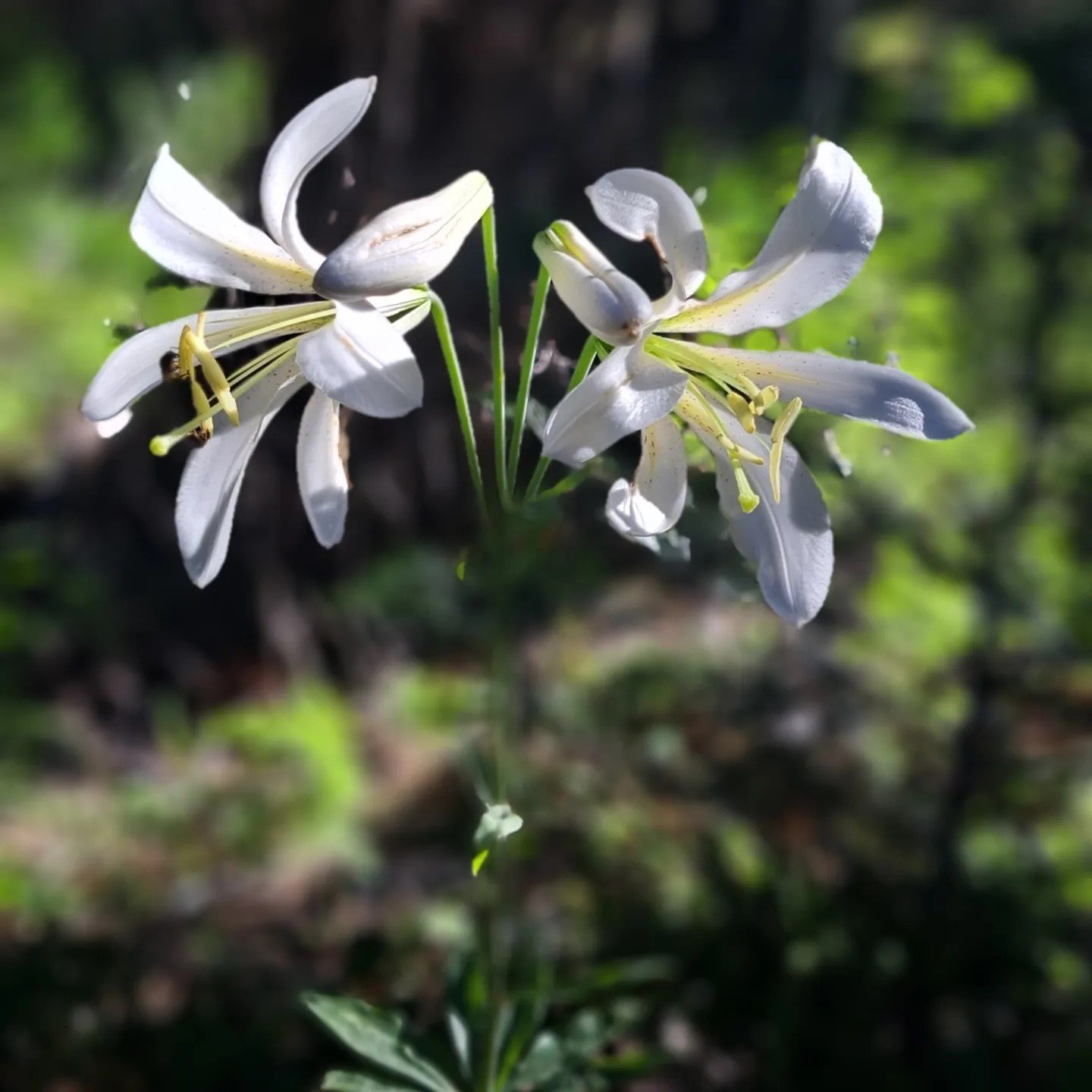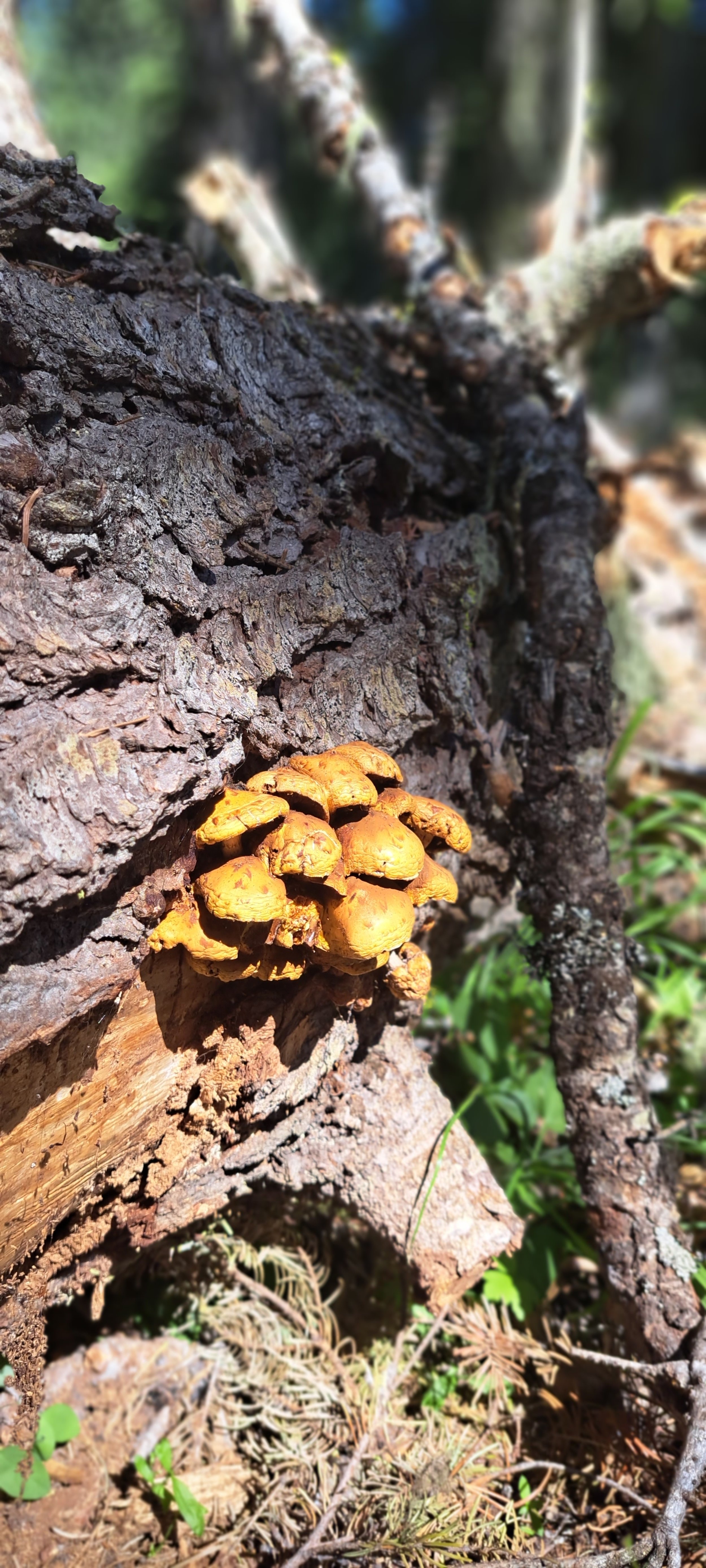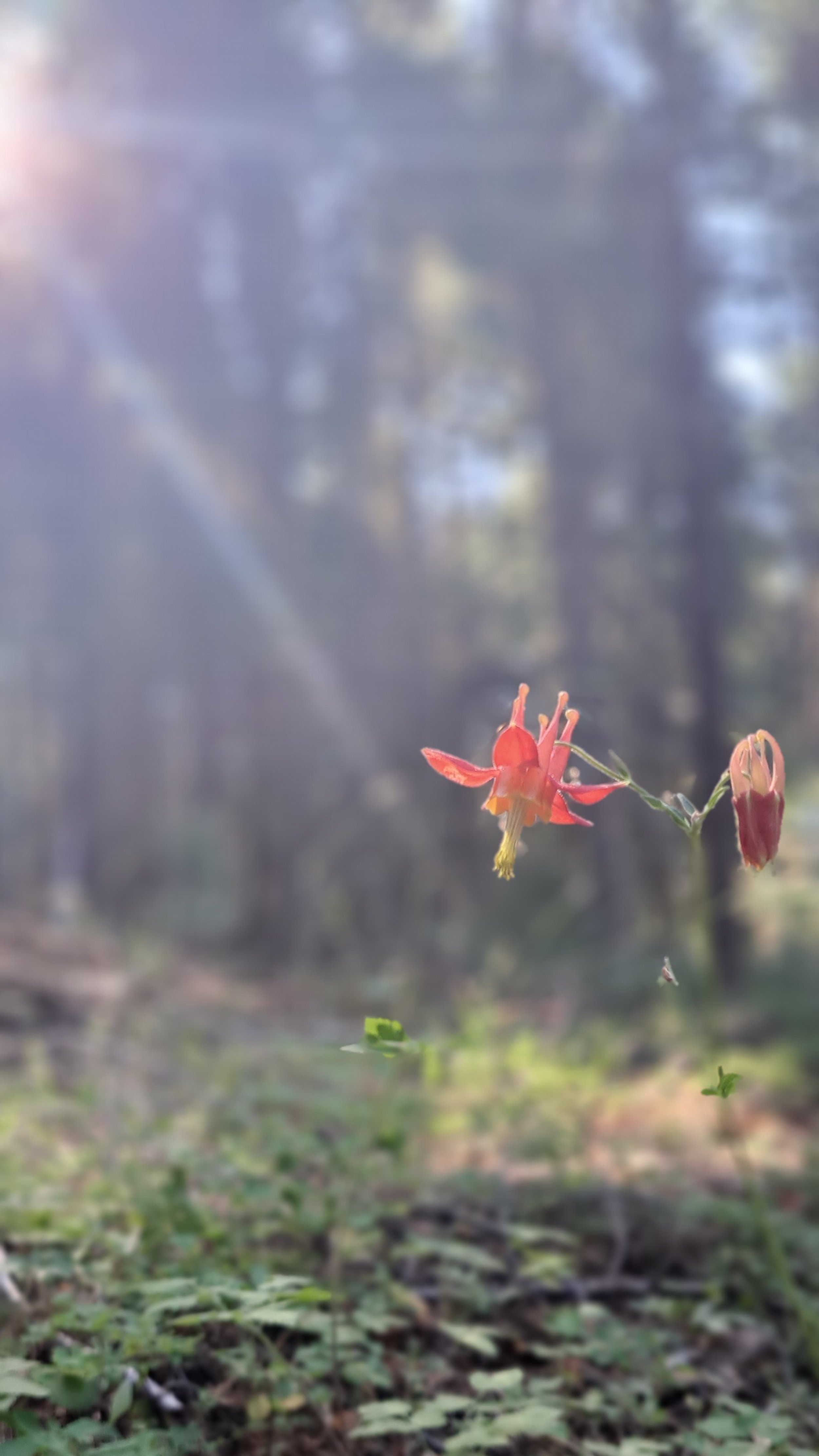By Meaghen O’Rourke
Last weekend, our adventure led us through the awe-inspiring landscape of the Cascade-Siskiyou National Monument. We set out to hike to peaceful Little Hyatt Reservoir, following a section of the iconic PCT. The journey began in a dense and secluded forest, where nature enveloped us in its beauty. As we ventured further along the trail, the trees gradually gave way to rays of sunlight cascading down to the forest floor.
Approaching the trail's end, the pleasant sound of rushing water reached our ears, beckoning us closer even before it came into view. Emerging from the forest's embrace, we encountered a gravel road that led us towards an intriguing sight - a weathered and time-worn dark barrier. Atop this barrier, crystal clear water flowed gracefully, sparkling as it descended into the tranquil flow of Keene Creek.

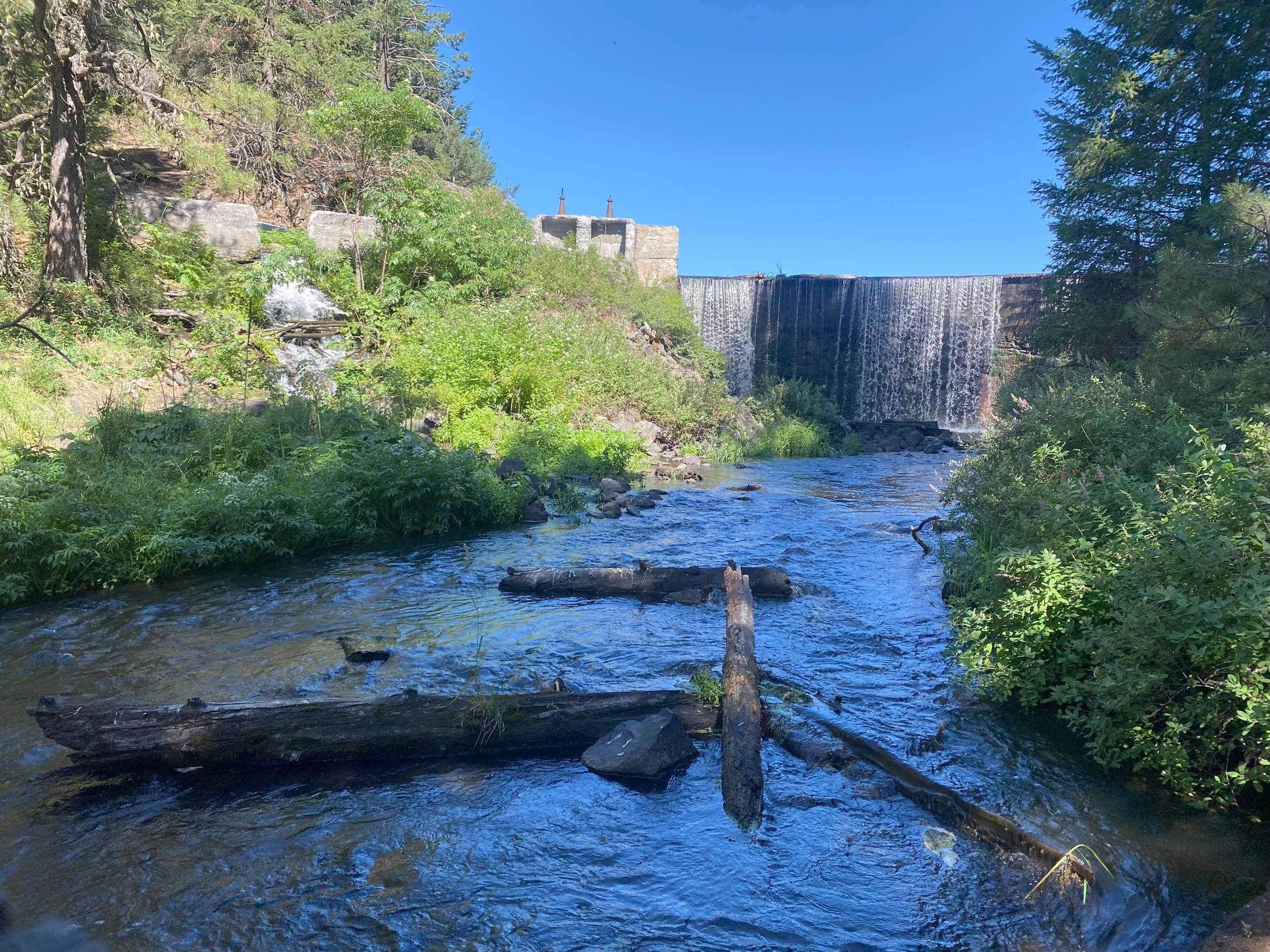

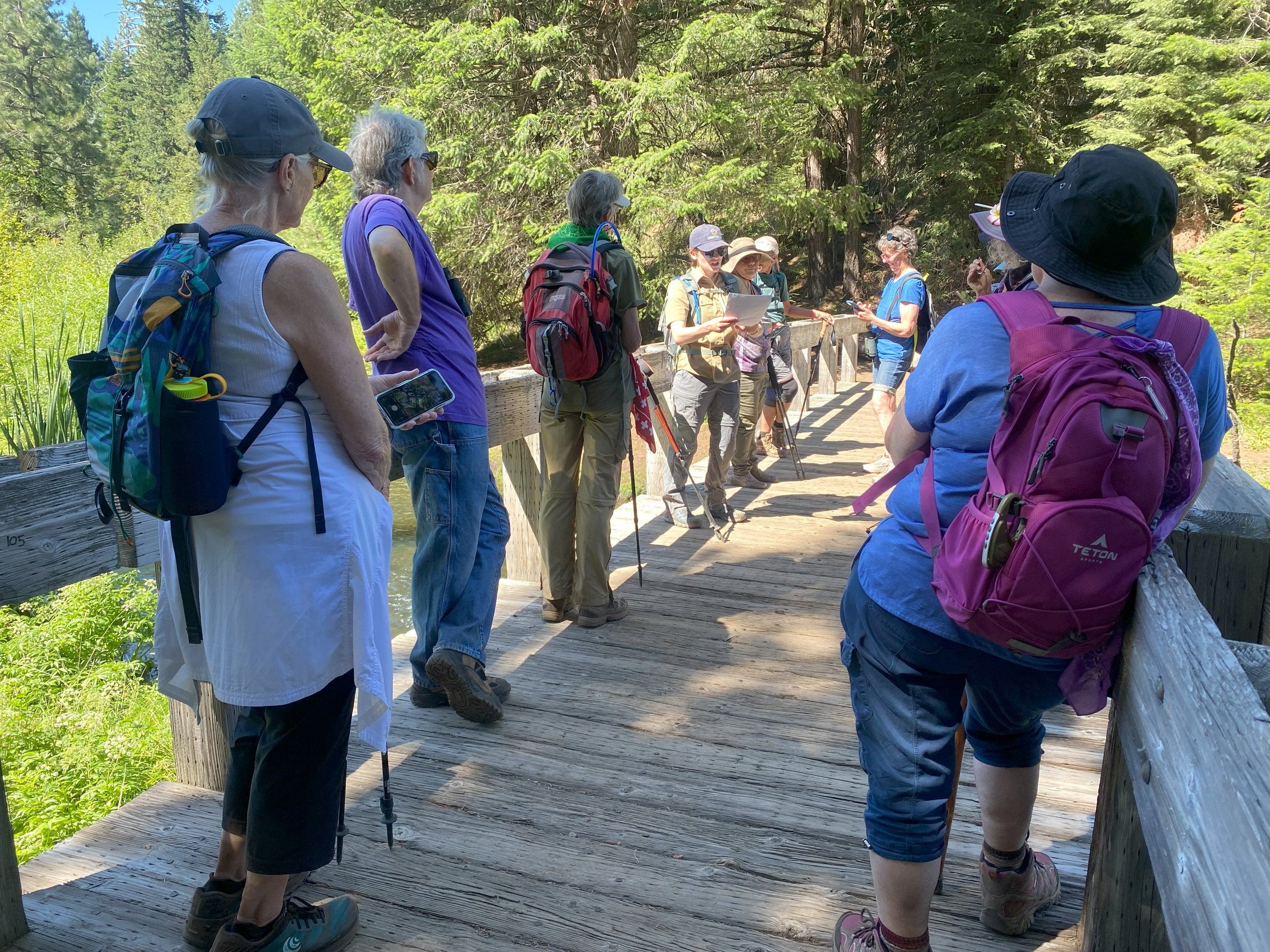
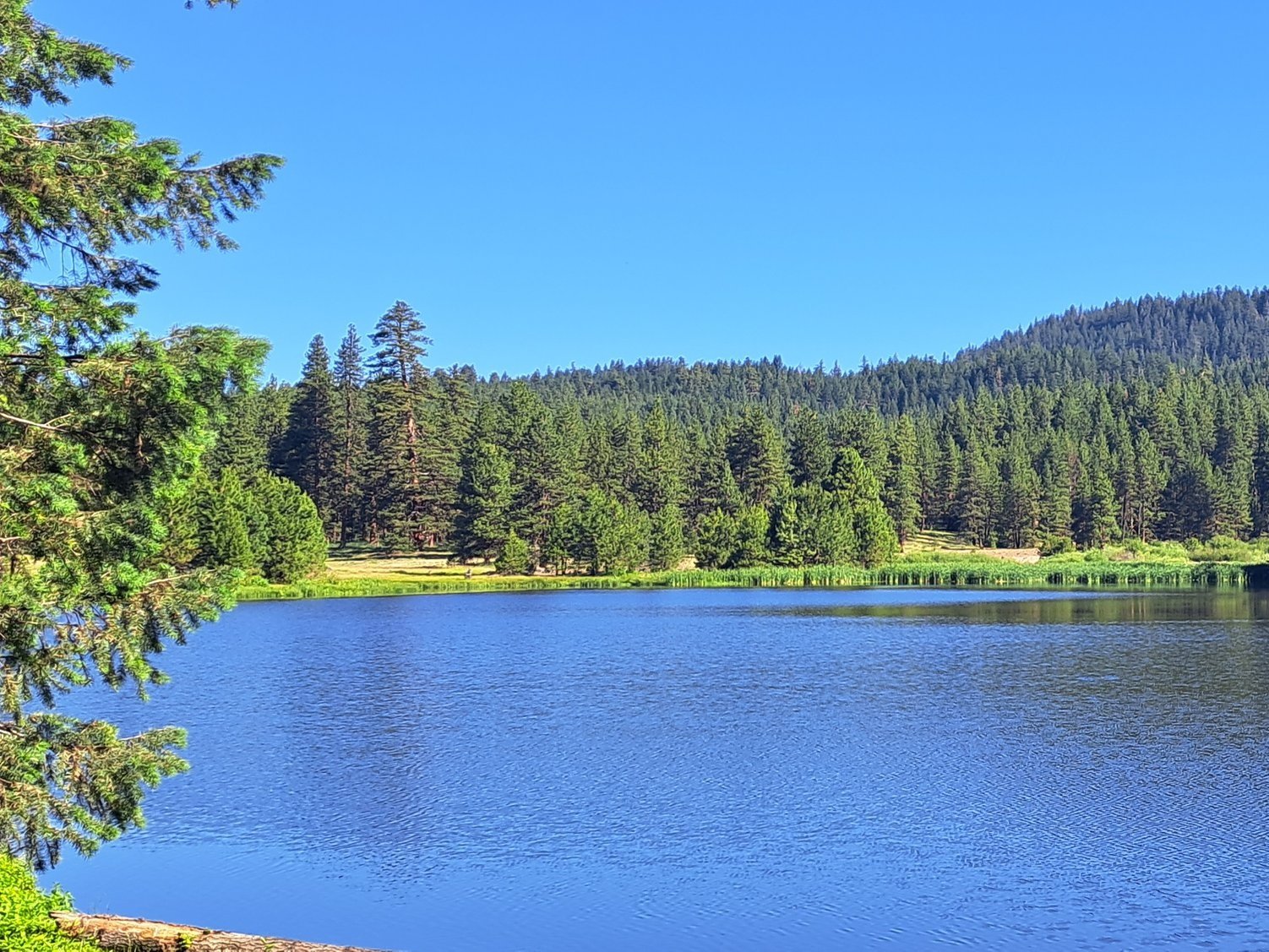
Little Hyatt Reservoir, the destination of our hike, holds a place in the region's history of water rights and natural resource usage. As we gathered together, I transported the group back in time, sharing the history of the early 1900s and mid-1920s when irrigation districts in the area completed several water diversion and delivery systems. The complexity of water resources is evident in the presence of transbasin usage throughout this region. In 1923, the construction of Hyatt Reservoir in the Klamath Basin was completed, with the purpose of transferring water to users in the Rogue River Basin. Subsequently, Little Hyatt Reservoir became another addition to the system at a later time.
In 2003, the Bureau of Land Management (BLM) applied for water rights to Little Hyatt Reservoir, and by 2010, they had secured a recreational, aesthetic, and wildlife water right. As we discussed the acquisition of water rights, we examined the dam, observing large cracks spanning its length. Concerns had surfaced during a 1999 structural review about the dam's stability, as it relied on the support of a deteriorating concrete canal. The KPFF Consulting Engineers recommended repairs to prevent potential dam failure.
A subsequent 2007 assessment confirmed the dam's precarious state, mirroring the 1999 report's findings. By 2010, the BLM made the decision to buttress the dam as the primary option, with a contingency plan of partially removing the dam by lowering it to about 6 feet. However, the implementation of repair options depended on securing the necessary funds.
Taking a moment to absorb all this information and gaze at the old structure, we stood in contemplation. The reservoir had transformed into a captivating case study, showcasing the intricate complexities of water rights and usage. Yet, there was more to explore. To gain a vantage point above the dam, we had to navigate over old concrete slabs and clamber up a small rock face, a challenging endeavor. Undeterred, the adventurous group bravely embraced the task, and our efforts were richly rewarded with a breathtaking view of the reservoir from above.
Sitting amidst the serene beauty of the water and the lush forested surroundings, the day exuded tranquility. Reflecting on the reservoir's history and contemplating its future added an extra layer of meaning to the experience, making it all the more gratifying. Our hike to Little Hyatt Reservoir was both relaxing and informative as we examined the intricate relationship between the natural world and human needs.

